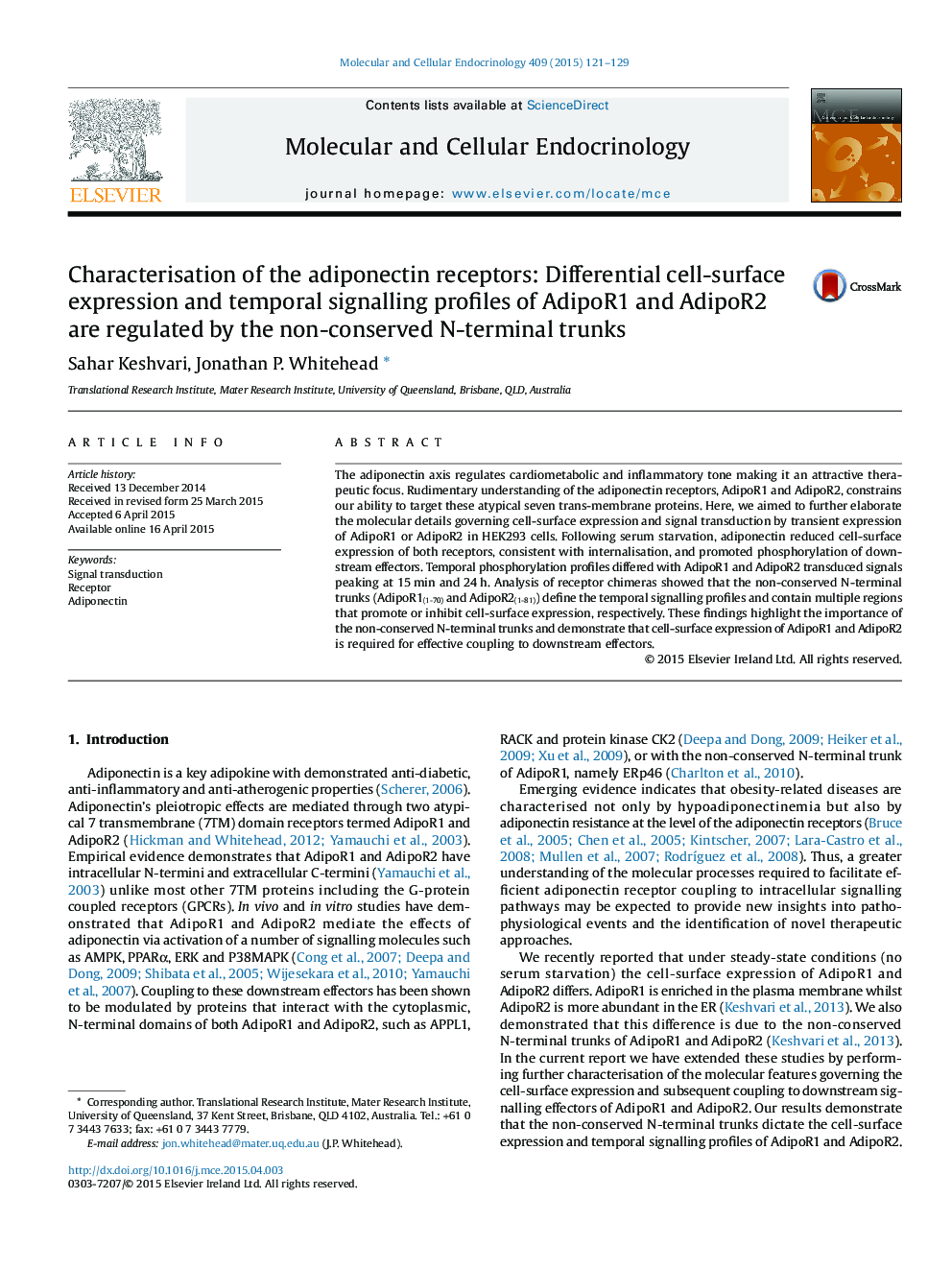| Article ID | Journal | Published Year | Pages | File Type |
|---|---|---|---|---|
| 2195797 | Molecular and Cellular Endocrinology | 2015 | 9 Pages |
•AdipoR1/R2 exhibit different cell-surface expression and temporal signalling profiles.•The non-conserved, N-terminal trunks (AdipoR1(1-70)/R2(1-81)) underpin the differences.•Conserved trafficking motifs are required for cell-surface expression of both receptors.
The adiponectin axis regulates cardiometabolic and inflammatory tone making it an attractive therapeutic focus. Rudimentary understanding of the adiponectin receptors, AdipoR1 and AdipoR2, constrains our ability to target these atypical seven trans-membrane proteins. Here, we aimed to further elaborate the molecular details governing cell-surface expression and signal transduction by transient expression of AdipoR1 or AdipoR2 in HEK293 cells. Following serum starvation, adiponectin reduced cell-surface expression of both receptors, consistent with internalisation, and promoted phosphorylation of downstream effectors. Temporal phosphorylation profiles differed with AdipoR1 and AdipoR2 transduced signals peaking at 15 min and 24 h. Analysis of receptor chimeras showed that the non-conserved N-terminal trunks (AdipoR1(1-70) and AdipoR2(1-81)) define the temporal signalling profiles and contain multiple regions that promote or inhibit cell-surface expression, respectively. These findings highlight the importance of the non-conserved N-terminal trunks and demonstrate that cell-surface expression of AdipoR1 and AdipoR2 is required for effective coupling to downstream effectors.
